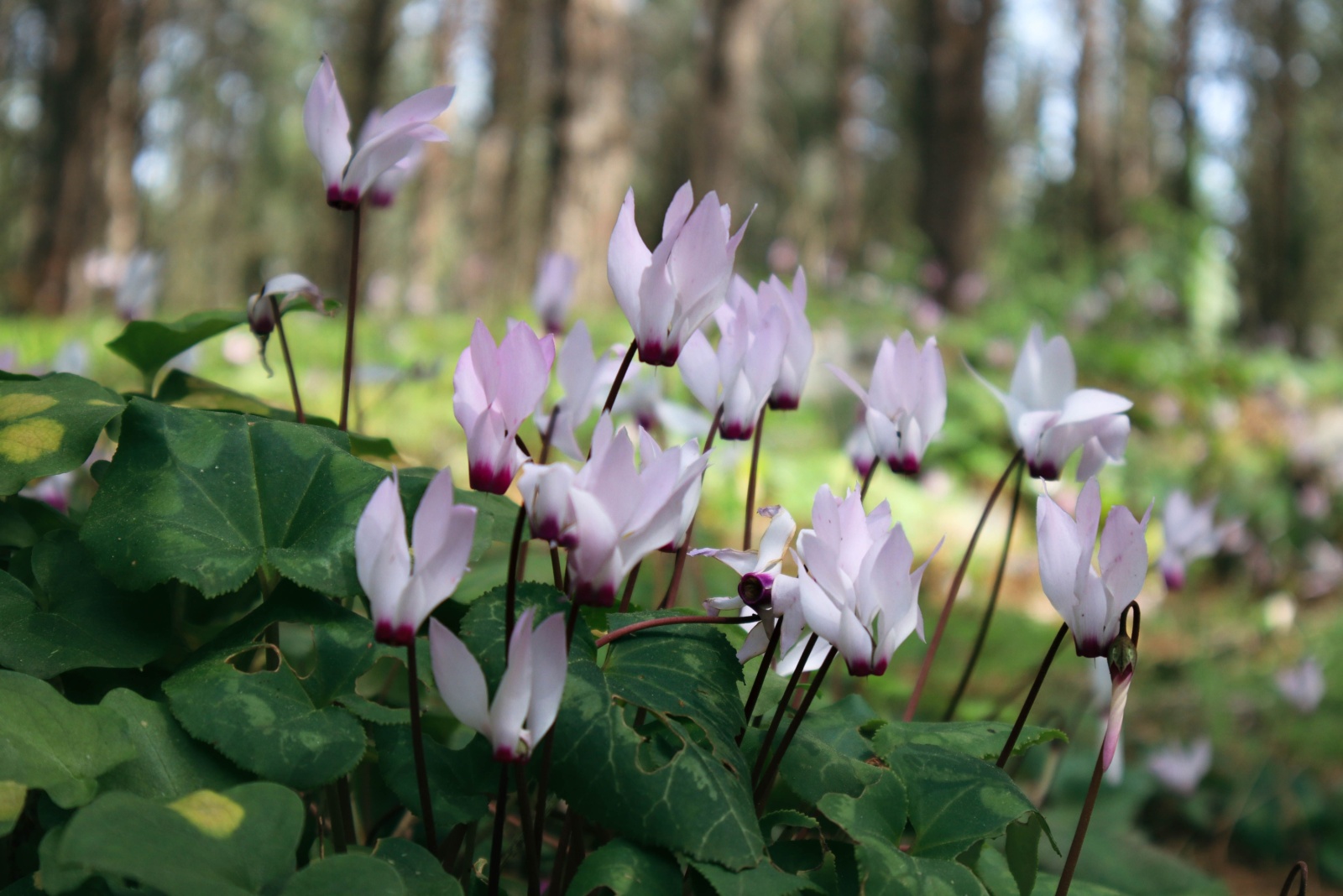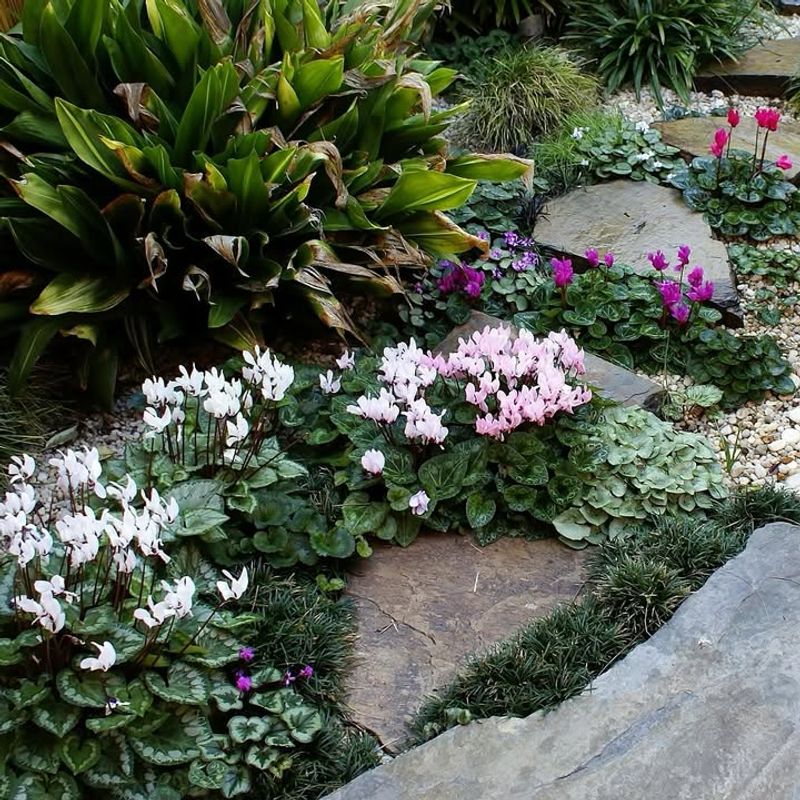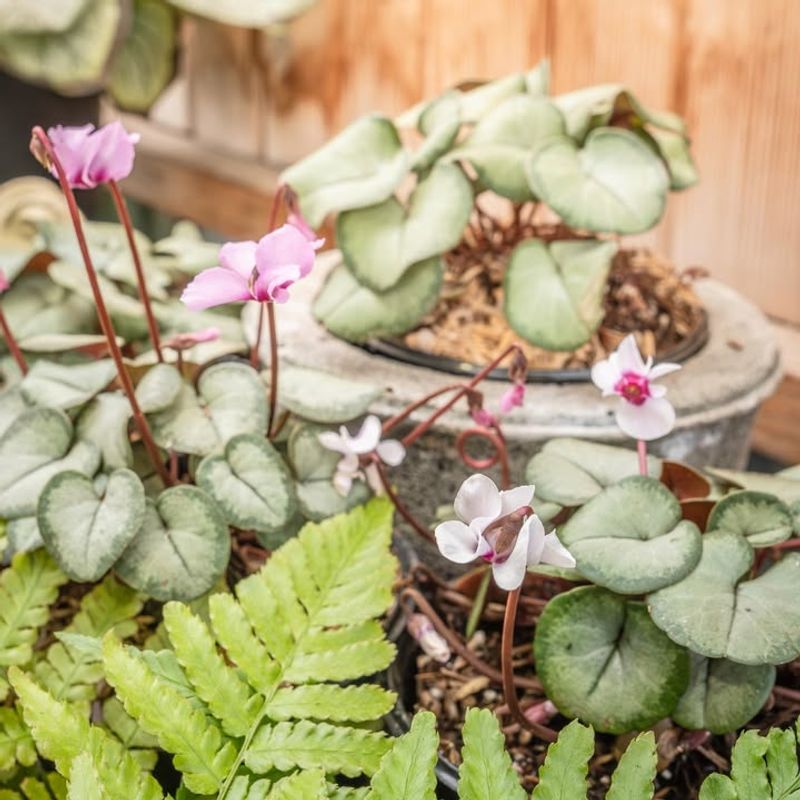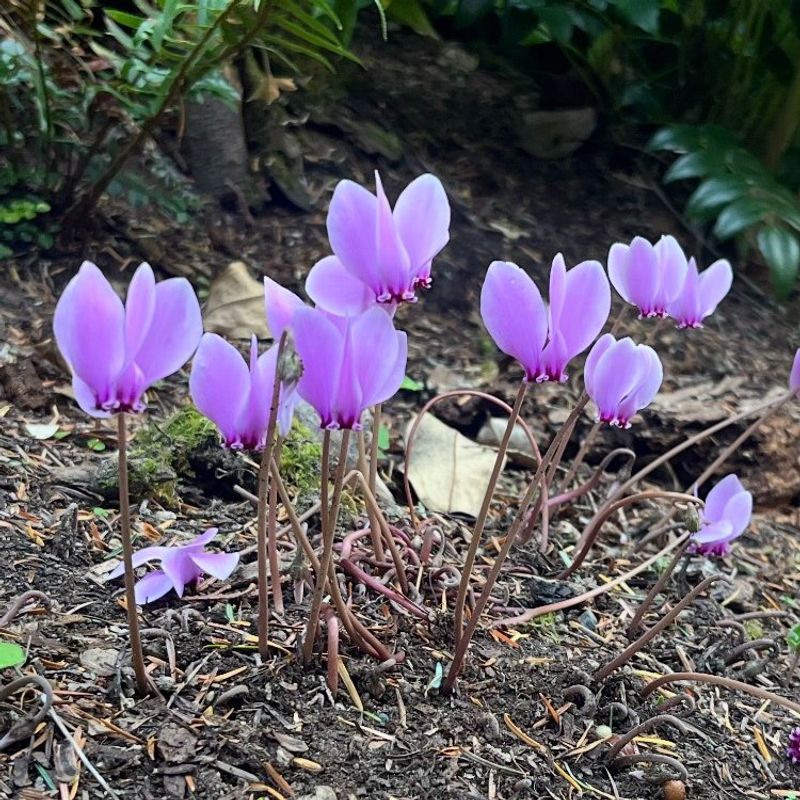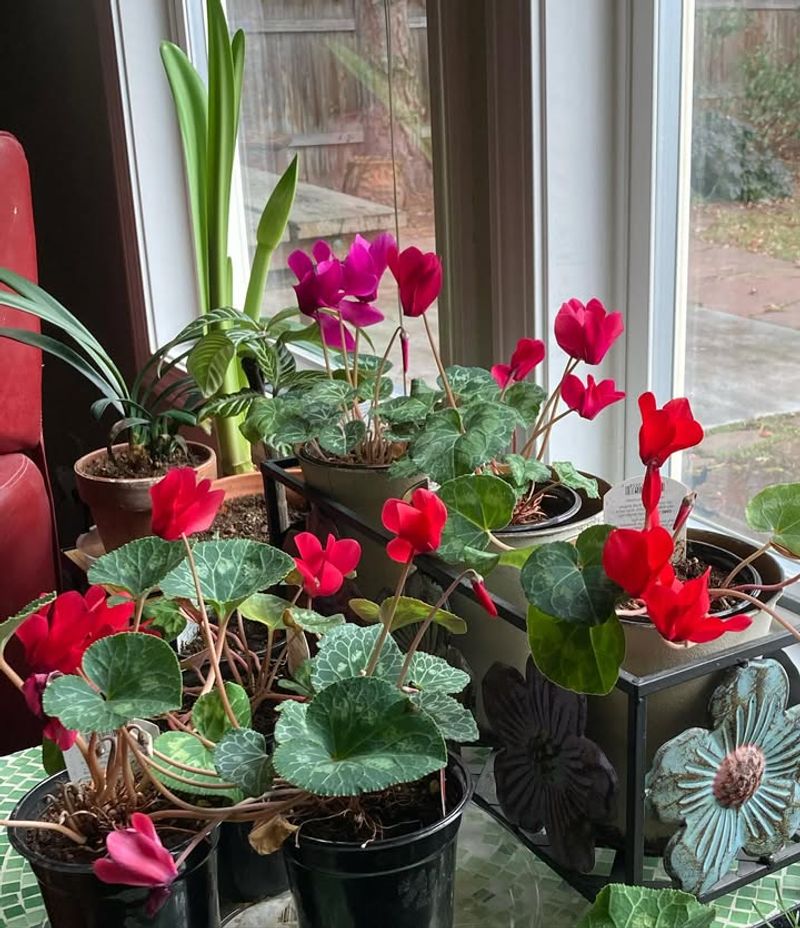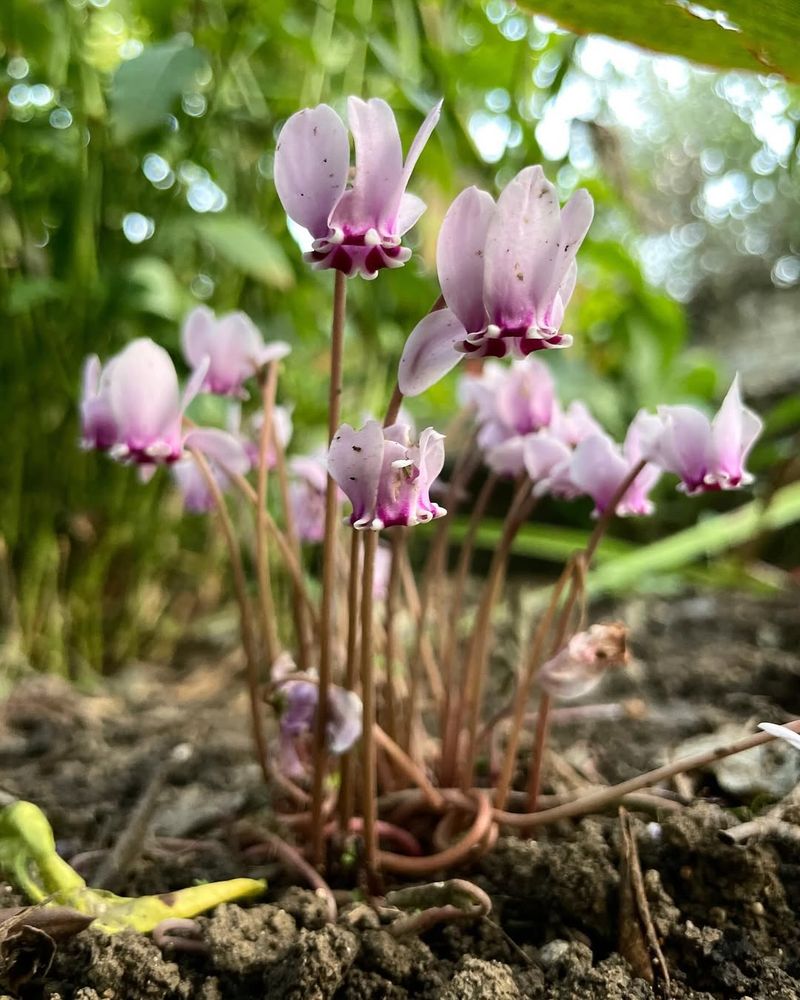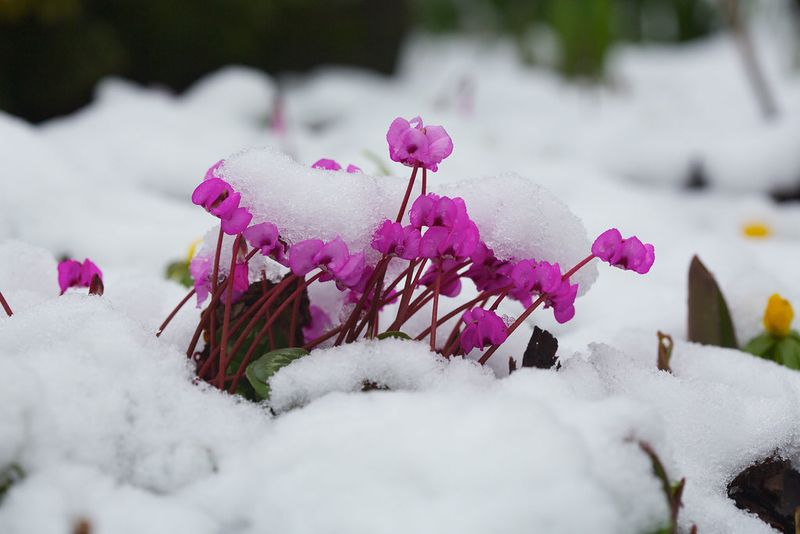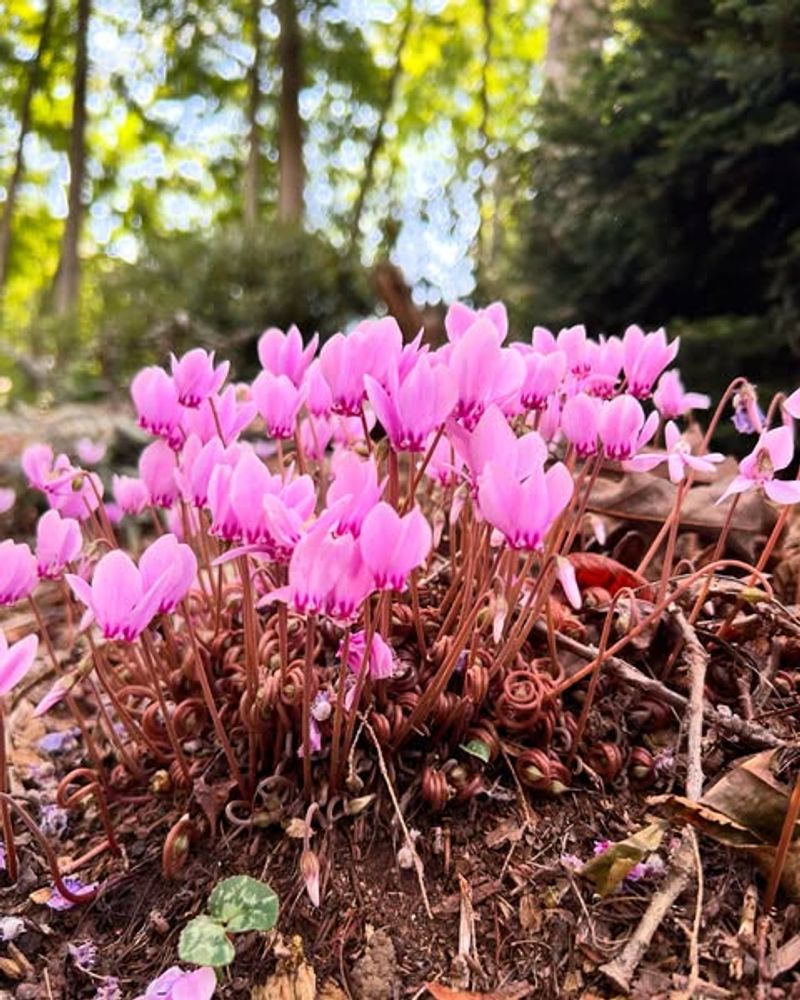Cool Utah nights and crisp mountain air give cyclamen exactly what they crave, letting these dainty winter bloomers shine far longer outdoors than inside.
While indoor plants often fade fast, outdoor cyclamen settle in and put on a show that lasts well past expectations.
With the right spot and a little know-how, Utah gardeners are finding their cyclamen can thrive in the chill and carry color straight through the season.
Microclimate Magic In Your Yard
Utah gardeners have learned to spot the warmest corners of their yards where cyclamen can flourish. Planting near south-facing walls or tucked beside large rocks creates pockets of warmth that shield plants from bitter winds.
These protected spots can be several degrees warmer than open areas. Stone structures absorb heat during sunny days and release it slowly at night, giving cyclamen extra protection.
Fences and hedges also block harsh breezes that would otherwise damage delicate petals and leaves. Finding these special zones transforms ordinary gardens into cyclamen havens.
Choosing Hardy Cyclamen Varieties
Not all cyclamen are created equal when it comes to surviving outdoors. Utah gardeners have discovered that Cyclamen hederifolium and Cyclamen coum are champions at handling cold temperatures and variable weather.
These varieties are naturally tougher than their greenhouse cousins sold in stores. Hardy varieties can survive freezing temperatures and even bounce back after snow melts.
Their tubers go dormant during extreme cold, then wake up when conditions improve. Shopping specifically for outdoor-hardy types makes all the difference in long-term success and beautiful blooms year after year.
Perfect Drainage Prevents Root Rot
Soggy soil is cyclamen’s worst enemy, and Utah gardeners have mastered the art of drainage.
Adding sand, perlite, or small gravel to planting areas ensures water flows away quickly instead of pooling around sensitive tubers. Raised beds and sloped areas work wonderfully for this purpose.
Good drainage mimics the rocky Mediterranean hillsides where cyclamen naturally grow wild. When roots stay too wet, they rot and the plant withers within weeks.
Smart gardeners test drainage by digging a hole and filling it with water to see how fast it disappears.
Mulch Blankets For Temperature Control
Applying a thick layer of organic mulch around cyclamen acts like a cozy blanket that moderates soil temperature.
Utah gardeners use shredded leaves, pine needles, or bark chips to insulate tubers from sudden temperature swings. This protection keeps roots warmer during freezing nights and cooler during hot afternoons.
Mulch also helps retain just enough moisture without creating soggy conditions. As organic materials break down, they add nutrients to the soil that cyclamen roots appreciate. A three-inch layer provides optimal protection without smothering the crown of the plant.
Strategic Watering During Dormancy
Understanding cyclamen’s dormancy cycle has been a game-changer for Utah gardeners. During summer months when leaves fall off, tubers need very little water to survive. Overwatering dormant plants causes them to rot faster than anything else.
Once fall arrives and new growth emerges, gradual watering resumes to support blooming. Utah’s naturally dry climate actually helps because it prevents accidental overwatering during rest periods.
Experienced gardeners check soil moisture with their fingers before adding any water, ensuring tubers stay just barely moist but never saturated throughout the year.
Afternoon Shade Makes The Difference
While cyclamen love sunlight, Utah’s intense afternoon rays can scorch their delicate leaves and flowers.
Clever gardeners plant them where they receive gentle morning sun but shade during the hottest part of the day. Under deciduous trees or on the east side of buildings works perfectly.
This lighting pattern matches their natural Mediterranean habitat where trees and rocks provide dappled shade.
Too much direct sun bleaches the beautiful marbled patterns on cyclamen leaves and shortens bloom time. Balanced light exposure keeps plants healthy, colorful, and flowering for months instead of weeks.
Snow Cover As Natural Insulation
Utah gardeners have learned that snow is actually a friend to outdoor cyclamen, not an enemy. A blanket of snow insulates plants from harsh winds and extreme temperature drops that occur on clear winter nights. The snow layer keeps soil temperatures more stable than exposed ground.
Hardy cyclamen varieties can survive completely buried under snow for weeks, then emerge unharmed when it melts.
The key is ensuring good drainage so melting snow doesn’t create waterlogged conditions. Many gardeners report their best blooms happen after snowy winters that provided consistent protection.
Planting Depth Protects Tubers
Getting the planting depth right is crucial for cyclamen survival outdoors. Utah gardeners have discovered that tubers should sit just below the soil surface, with their tops barely covered by a half-inch of soil.
Planting too deep causes rot, while too shallow exposes tubers to freezing damage. The crown where leaves and flowers emerge needs to stay dry to prevent fungal problems.
Positioning tubers slightly on their sides can help water drain away from the crown. Many experienced gardeners mark their planting spots so they don’t accidentally dig up dormant tubers during summer projects.
Companion Planting For Protection
Smart Utah gardeners surround their cyclamen with compatible companion plants that offer mutual benefits. Low-growing evergreen groundcovers like creeping thyme or sedum provide living mulch that moderates soil temperature.
Taller plants like hellebores shield cyclamen from harsh winds without blocking necessary light. Companion plants also help mark where dormant cyclamen tubers rest during summer when there’s no visible growth above ground.
Choosing neighbors with similar water and soil needs prevents accidental overwatering. This layered approach creates mini-ecosystems where cyclamen thrive alongside other tough perennials adapted to mountain climates.
Fall Planting Timing Advantage
Timing makes all the difference, and Utah gardeners have found that fall planting gives cyclamen the best start.
Planting in September or early October allows tubers to establish roots before winter arrives, making them stronger and more resilient. Spring-planted cyclamen often struggle to adapt before summer heat forces dormancy.
Fall is also when hardy cyclamen naturally begin their growth cycle, so plants work with nature’s rhythm instead of against it.
Cooler temperatures and occasional rain help new plantings settle in without stress. By the time spring arrives, fall-planted cyclamen are already blooming beautifully.

